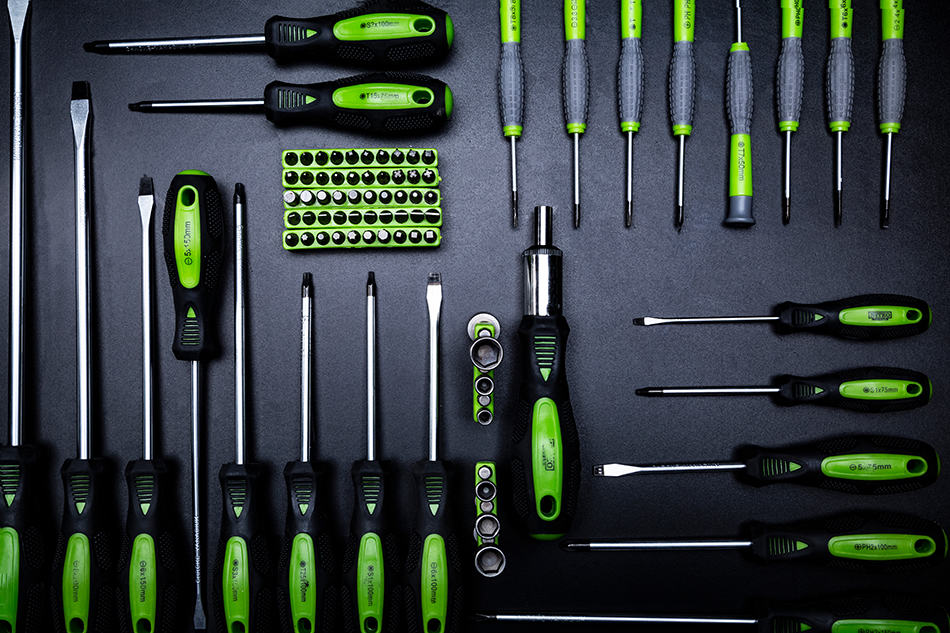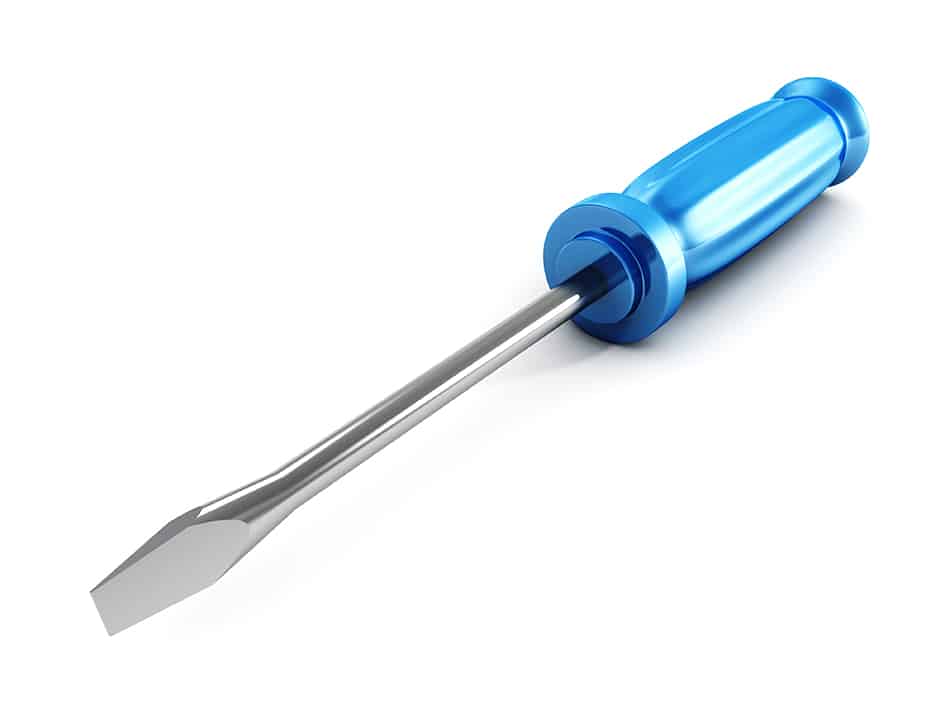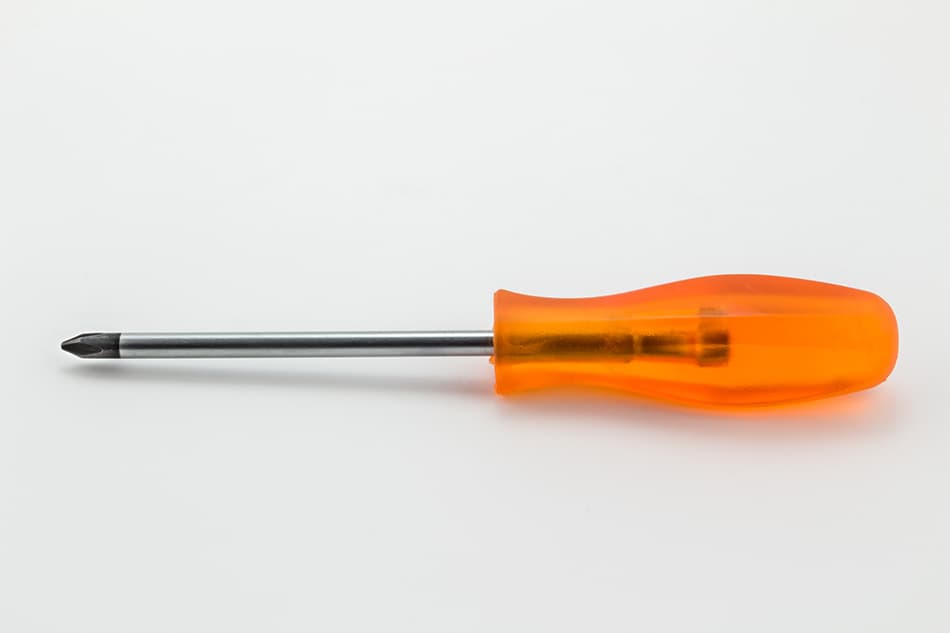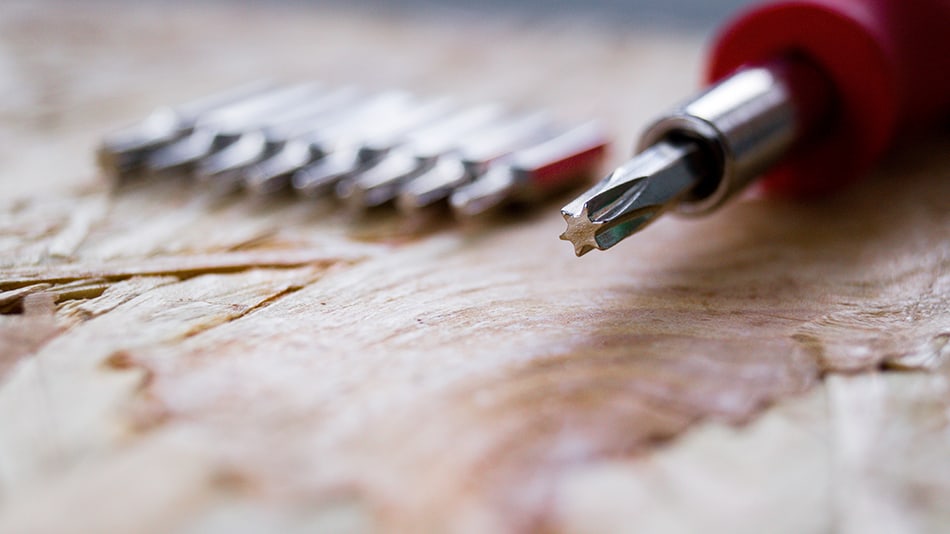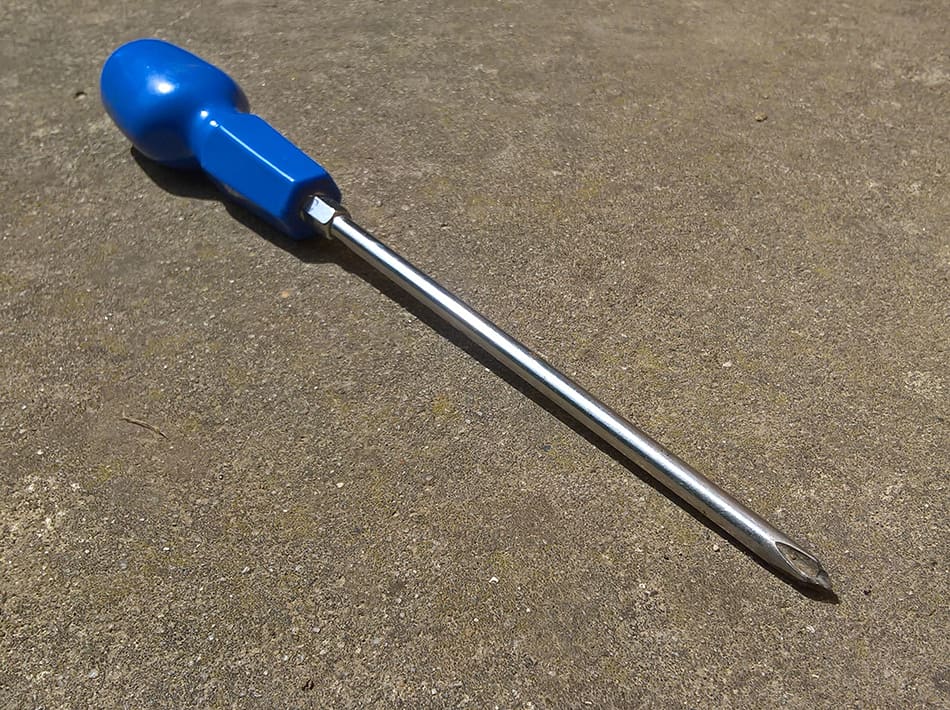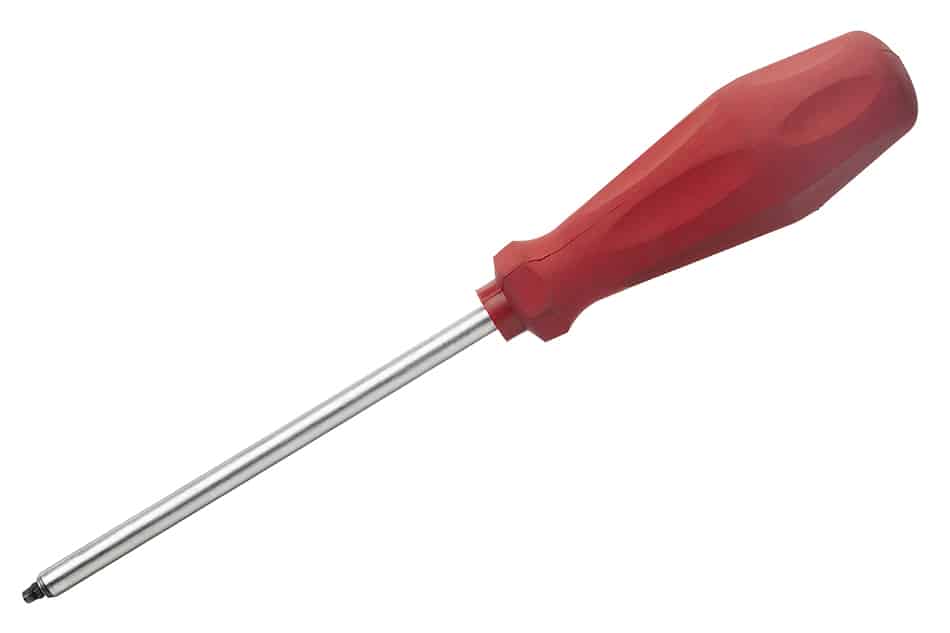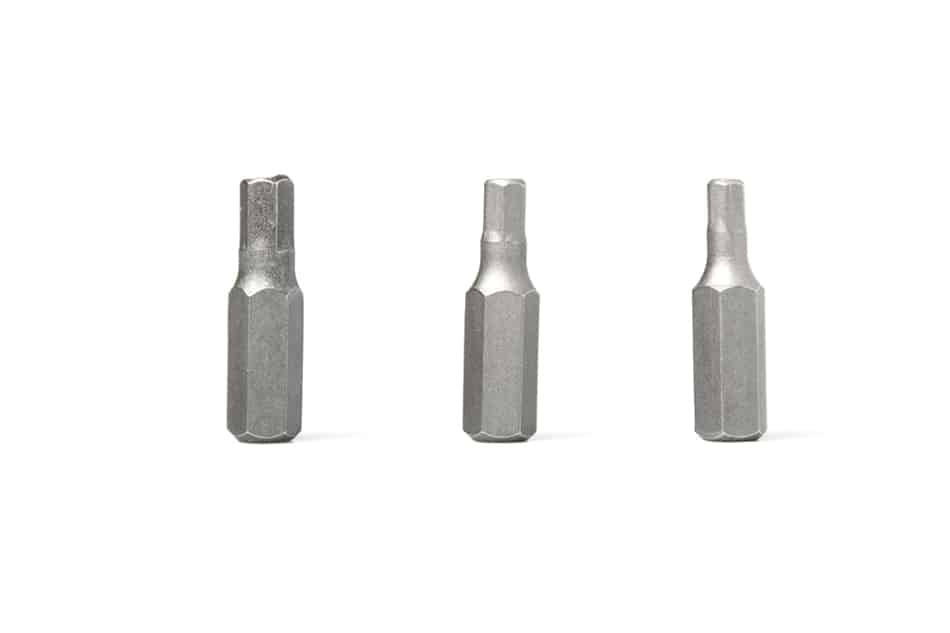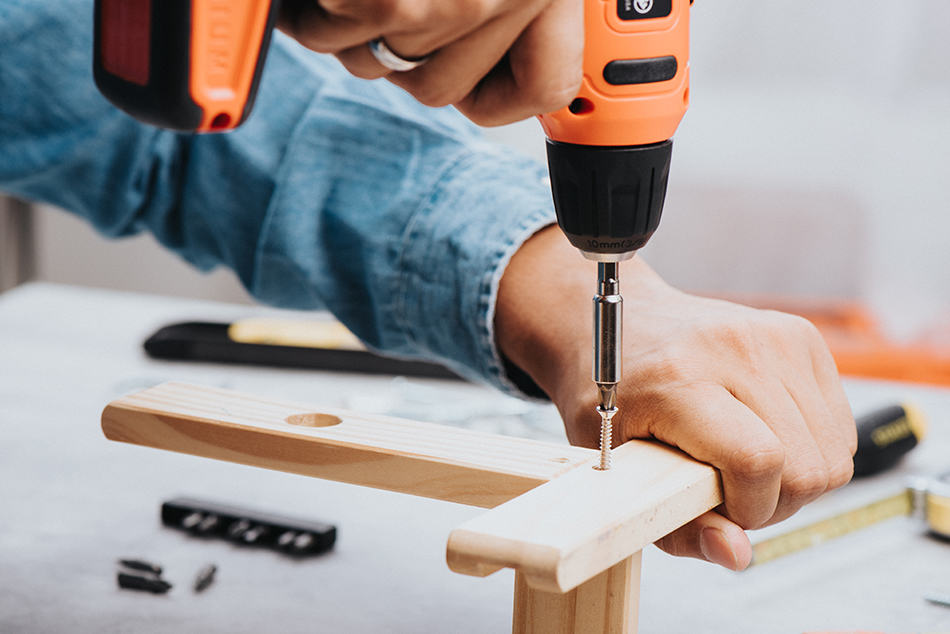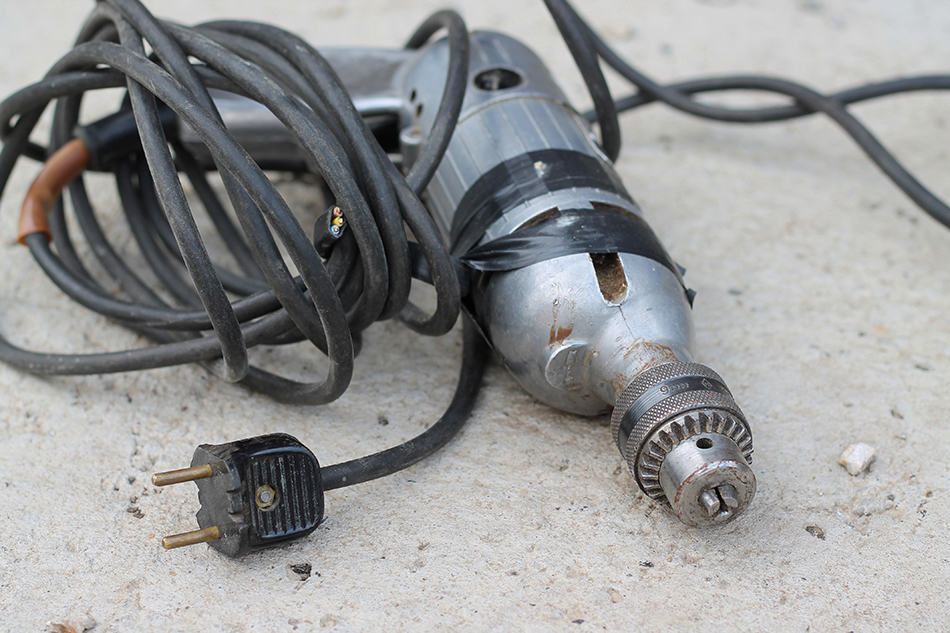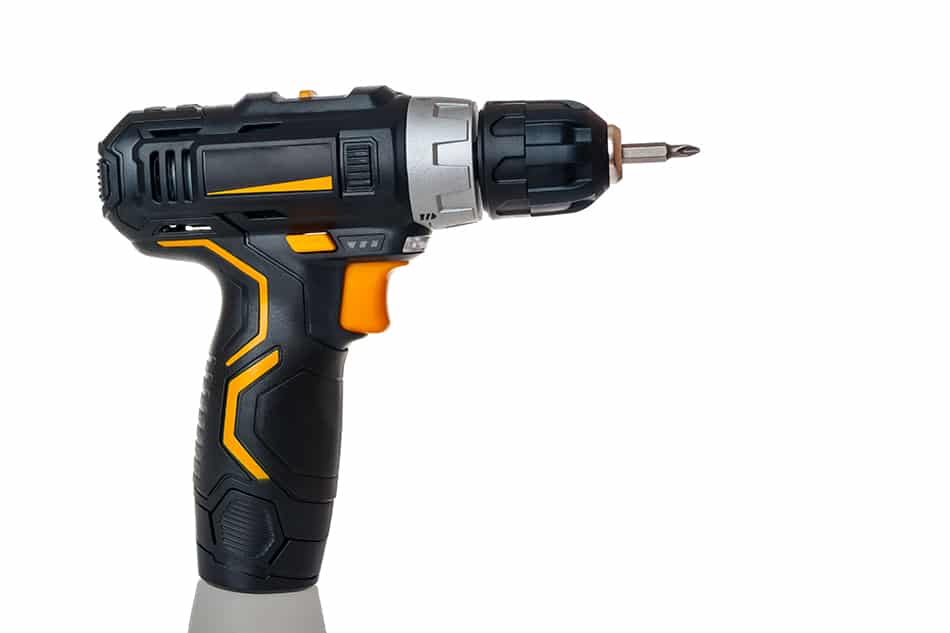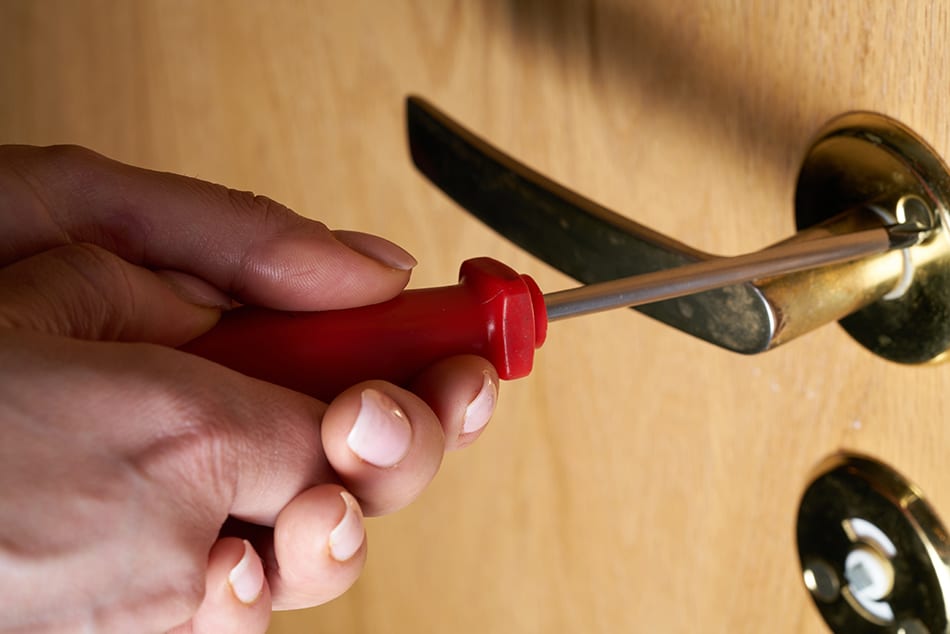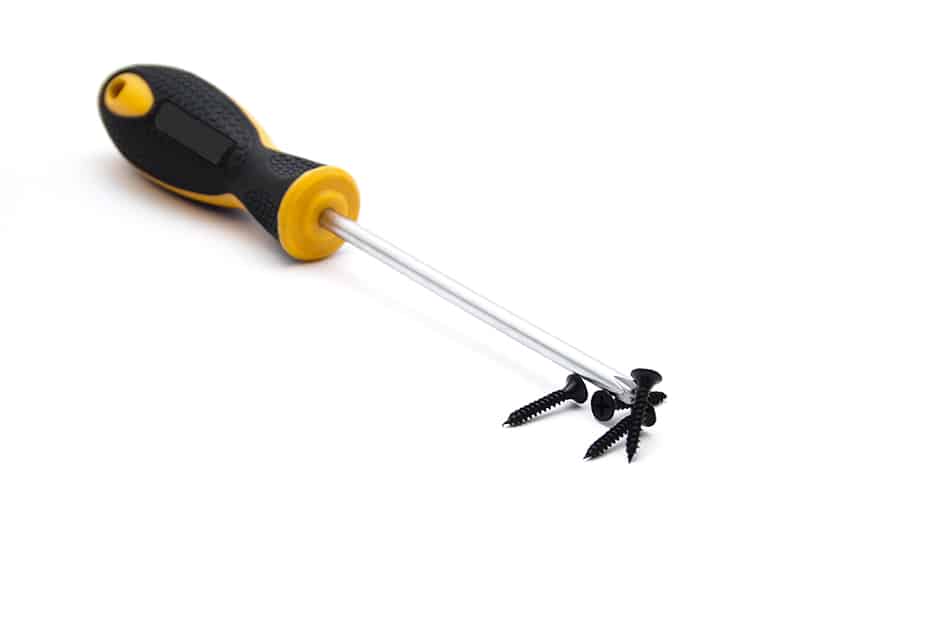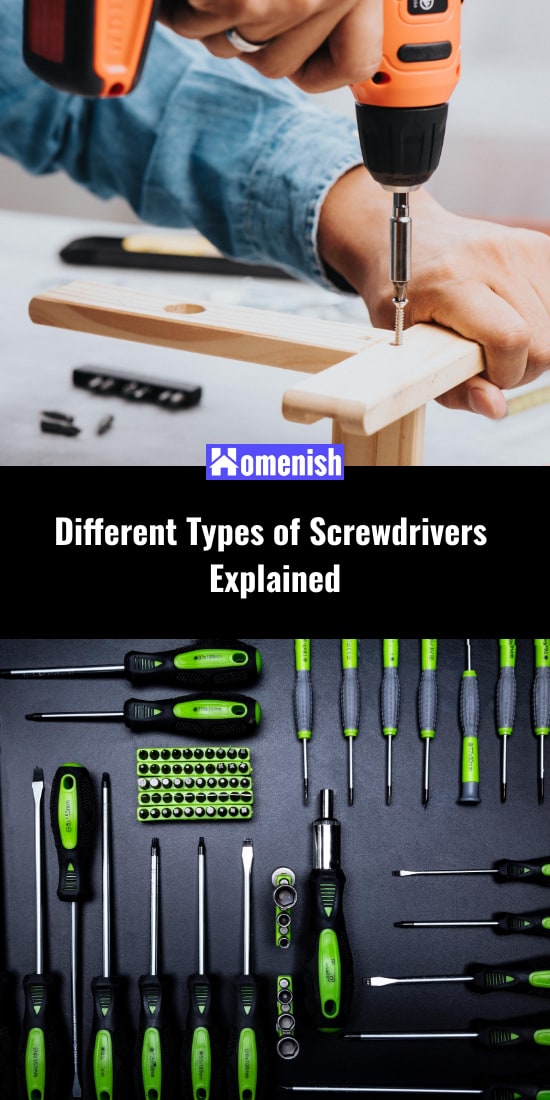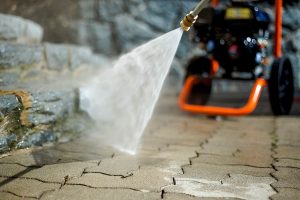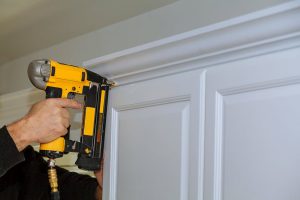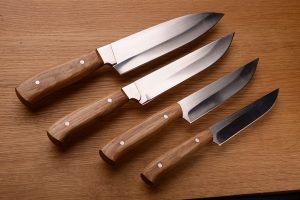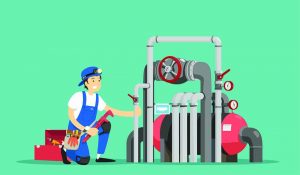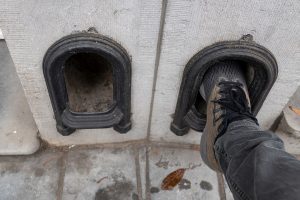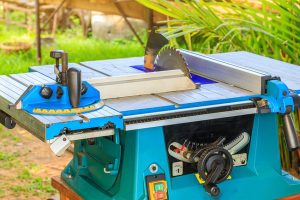Screwdrivers are a very basic tool that most people have used and typically own several of. You are probably aware of a few different types of screwdriver heads but might be surprised to know there is actually a long list of various screwdriver types that correspond to certain types of screws.
Some types of screwdrivers are favored in certain areas of the world. For example, the Robertston screwdrivers are most popular in Canada, while the Japanese Industrial Standard Screwdrivers are prevalent in Japan. In the USA and the UK, the most commonly used screwdriver heads are the flathead or slotted screwdriver and the Phillips screwdriver.
Different types of screwdrivers exist to operate different screws, which vary in design with various benefits in mind. If you are planning a building project, you might be thinking about which types of screws and, therefore, which screwdrivers will be best for the job.
For example, slotted screws are best operated with a manual screwdriver as power screwdrivers tend to slip out easily, so if you have many screws to fasten into your project and intend on using a power screwdriver, then you might be best considering a type of screw that offers good grip on the screwdriver.
Read this guide for more information on the different types of screwdrivers available and the screw types they correspond with, what they look like, and what types of projects they are best used for.
Types of Screwdrivers
Flathead Screwdrivers
This is the most common type of screwdriver and is also popularly known as a ‘slotted’ screwdriver. It is considered to be the oldest type of screwdriver and features a simple design of a flat, horizontal blade, which fits into a single matching indentation. Flathead screwdrivers come in a wide range of sizes to fit the appropriate screws and are popular due to the fact that they are the easiest and cheapest design to manufacture.
They are widely used in carpentry and furniture construction but are not ideal for use with power tools. This is because the high speed at which power tools operate causes the screwdriver to easily come out of the slot and can typically damage the screw as a result. For this reason, more complex screw head types are more compatible with power screwdrivers as they are less likely to slip out.
One of the benefits of flathead screwdrivers is that they can double up as other tools, making them a multi-tool. Flathead screwdrivers have chisel-shaped heads and can therefore be used in place of a chisel in a pinch.
Flathead screwdrivers can be used as a type of level to exert force in the same way, a chisel can. For example, you can use this type of screwdriver to help open a paint tin or chip it underneath tiles to help lift them during removal.
Phillips Screwdrivers
This screwdriver is named after Henry F. Phillips, who bought the design from John P. Thompson after he failed to garner interest from multiple other businesses. The screwhead was disregarded by other businessmen with the belief that it was too complex. Phillips subsequently formed the Phillips Screw Company and continued to develop the design.
Today, this is one of the most popular types of screwdriver. It was seen to solve many problems that the simple flathead screwdriver presented, namely better grip to the fastener and less probability for the screwdriver to slip out.
It also solved the common issue of driver damage and was better suited for use with power tools. The Phillips head screwdriver features a cross design with angled tips. They are available in a wide range of sizes.
Torx Screwdrivers
This screwdriver was developed in Rhode Island in 1967. It has a star-shaped head with six points. The increased points of contact on this screw head result in increased torque transfer, which means there is less need to bear down during use. This makes it easier to operate and results in less fatigue for the user.
It is popular especially with mechanics, as it is less likely to slip out or ‘cam out,’ and the bits also benefit from a longer than average lifespan compared with other types of screwdriver heads. The name ‘Torx’ is a reference to the brand that is responsible for developing this type of screwdriver; however, it also goes by the name of ‘star driver.’
Pozidriv Screwdrivers
These screwdrivers were patented in 1962 as an improvement upon Phillips head screwdrivers. It features a similar crosshead design to the Phillip’s head, but with slight alterations and four extra blades at 45-degree angles to the main slots. This extra contact allows added torque to be applied without the risk of camming out.
The manufacturing process for creating Pozidriv screwdrivers is somewhat more complex than that of Phillips screwdrivers, which typically results in them being more expensive to buy. Phillips and Pozidriv screwdrivers may appear so similar that you might think they can be used interchangeably; however, using them incorrectly can result in damage.
If you use a Pozidriv screwdriver in a Philips screw, it is likely to slip out of the screw when tightened and cause damage to the screw. Equally, using a Phillips screwdriver with a Pozidriv screw will not give you a tight fit and will result in camming out when pressure is applied, potentially damaging both the screw and the screwdriver.
Robertson Screwdrivers
These screwdrivers have a square driver head and are named after their inventor, the Canadian P.L. Robertson. These screwdrivers and their corresponding screws have many advantages, including that they can be manufactured using cold-forming.
The lack of a precision tip means that these screwdrivers are less likely to slip out during use than any other type of screwdriver, and they are able to handle the maximum amount of torque.
These benefits have led to them being popularly used in the furniture and automotive industry in Canada, though they have not become widely used elsewhere. This is due to their designer having licensing issues during the early 1900s. Robertson was cheated out of a licensing agreement in England in 1908 and subsequently refused to license out the design to anyone else after managing to buy his rights back.
Famously, Henry Ford tried out the Robertson screws and was impressed, noting that they saved considerable time when manufacturing the Model T car; however, he decided to limit their use in his factories due to Robertson’s refusal to license the screws. As a result, Robertson screws did not become widespread in the USA, and instead, the Phillips screws became the screw of choice. Today they are predominantly found in Canada and are known for their durability.
Hex Screwdrivers
These screwdrivers work in the opposite way to conventional screwdrivers. Instead of the screw having a recess, the screw has a protruding hexagon shape, and the corresponding screwdriver has a head with a recess.
They also go by the names’ hexagon driver’, ‘hex key,’ and ‘Allen wrench.’ As the screws have a protruding component, they can also be tightened or loosened using an adjustable wrench. These types of screws are most commonly found on bicycles and in furniture assembly.
Clutch Head Screwdrivers
There are two types of clutch head screwdriver, known as ‘type A’ and ‘type G.’ Type A is the original and is shaped like a bow tie with a central knot. Type G is a later improvement and is the same shape without the central circular hole. These types of screws gained popularity in the 1940s, and 50’s when they were widely used in the manufacturing of GM vehicles, including cars, buses, and trucks.
Today these screws are primarily found in the production of mobile homes and recreational vehicles. Clutch screws were designed to be compatible with a flat head screwdriver as well as a special clutch screwdriver.
Supadriv Screwdrivers
Supadriv screws were created by the same company as Pozidriv shortly afterward. At first glance, the two types of screws are almost identical, and it is very difficult to distinguish between the two. The key difference is that the secondary blades that run at cross angles are slightly thicker on the Supadriv compared with the Pozidriv.
They offer a similar level of performance, though the Supadriv is said to offer superior bite, resulting in a more efficient screwing method with less chance of camming out.
Tri-Point Screwdrivers
These screwdrivers have three blades to form a ‘Y’ shape. They look very similar to a Phillips screwdriver, but with one less blade. These types of screws are popularly used in electronics, including Fuji digital cameras, Nintendo game ware, and numerous Apple products, including earlier versions of the Macbook Pro, the Apple Watch, and iPhone 7 and iPhone X. These types of screwdrivers are also known as ‘3-prong screwdrivers’ or ‘Y-tip screwdrivers.’
Tri-Angle Screwdrivers
This is a screwdriver that has a triangle-shaped head and is compatible with screws that have a triangular-shaped recess in them. As well as being operated with screwdrivers, tri-angle screws can also be turned with Allen keys. These types of screws are found in various types of consumer products, including children’s toys, toasters, vacuum cleaners, camping stoves, heaters, kettles, and golf clubs.
Tri-Wing Screwdrivers
This screwdriver is also known as a ‘triangular slotted screwdriver.’ It has a triangle shape in the middle with three wings that fan out from each edge of the triangle. In the 1970s tri-wing screws became popular within the aerospace and commercial aircraft industry, though it was later dropped after complaints that it caused damage during installation.
Today these types of screws are rare but can be found in some electronic equipment. Tri-wing screwdrivers are difficult to come by, and their lack of availability has subsequently resulted in them being quite expensive to purchase.
Spanner Screwdrivers
These screwdrivers feature a flat head that has the middle part cut out, with the resulting shape being similar to a miniature BBQ fork. Spanner screws have a very unique shape which means they are not compatible with any other screwdriver and can only be turned with a spanner screwdriver.
This makes them ideal for use in situations where security is essential, and therefore they have become popularly used in restrooms and elevators across the United States. They are also used on trains in the London Underground, the Panama Metro, and the Montreal Metro.
Other applications of these types of screws are to fix soft spikes onto golf shoes, in cameras, hand knives, and guns. The US military uses spanner screws in some of its service pistols to prevent them from being taken apart more than is essential for general maintenance. These screwdrivers also go by the name ‘pig nose screwdriver,’ ‘twin hole screwdriver,’ or in the UK, it is commonly called a ‘pin spanner.’ The trademarked name of spanner screws is ‘Snake Eyes.’
Frearson Screwdrivers
These screwdrivers are named after their inventor, the English John Frearson. They are also sometimes known as the ‘Reed and Prince screwdrivers’ after The Reed and Prince Manufacturing Company of Worcester, Massachusetts.
The shape of the Frearson screwdriver at first glance looks just like a Phillips screwdriver, but there are some key differences. The Frearson has a sharp point compared to the more rounded tip of a Phillips, and the edges are straighter and more clearly defined. This means that a higher level of torque can be applied to a Frearson screw with less chance of camming out.
The design of Frearson screws means that any screw size can be operated with a single Frearson screwdriver. This is useful in scenarios where carrying a range of different tools isn’t convenient, such as in marine applications. This has led to the Frearson screw being popularly used in nautical equipment and marine hardware.
Japanese Industrial Standard Screwdrivers
These screwdrivers operate screws with a slotted cross on them and look very similar in design to Phillips screwdrivers. You will find these types of screws being used on most products that come out of Japan, as they are considered the gold standard across the country.
Though it is easy to mistake these screws for Phillips screws, they do have a telltale sign to help with identification. They will have a small dot near the slots to distinguish them from other screw types.
Fortunately, if you come across these screws but do not own a Japanese Industrial Standard Screwdriver, you can use a Phillips or Frearson screwdriver to operate them. However, use caution as using an incorrect screwdriver to turn the screws increases the risk of damaging them.
Styles of Screwdrivers
As well as having various shaped tips to correspond with specific screws, screwdrivers can also vary in their style. The job you are performing will largely dictate the type of screwdriver you need. For example, if you just have one or two screws to insert, you probably won’t feel the need to get out a super powerful corded screwdriver when a manual screwdriver would suffice.
If you have a lot of screws to insert or remove, then a powered screwdriver will be much quicker, easier, and more convenient, and in this case, you can choose from a cordless screwdriver, a corded screwdriver, or a battery-powered screwdriver.
Battery Powered Screwdrivers
Battery-powered screwdrivers are small handheld tools that are not much bigger than manual screwdrivers. They turn automatically at the press of a button and are powered by small disposable batteries. The advantage of these types of screwdrivers is that they save the user from having to manually operate the screwdriver, therefore saving potential exhaustion or fatigue.
They are particularly useful for people who have limited strength in their hands, as they provide power while still being small and lightweight. Their size makes them perfect for use in difficult-to-reach places, such as the back of cupboards or tight spaces.
The drawback of these types of screwdrivers is that they have limited power when compared with cordless or corded screwdrivers. They may struggle to work any screws that are tightly fixed in place, and they use up power quite quickly, meaning if you use the tool frequently, you’ll need to have a good supply of backup batteries.
Corded Screwdrivers
Corded screwdrivers are the most powerful types of screwdrivers available. These can generate serious levels of torque that make any screwing job quick and easy. If you have screws that have become stuck in place over time or have rusted into their place, a corded screwdriver will have no problem removing them.
The main problem with corded screwdrivers is that they need to be plugged into mains power to operate, which can be quite inconvenient if you don’t have a plug nearby. In some instances, for example, if you need to use your corded screwdriver outside on the fence in your yard, you could use an extension cable to get power outside, but you’ll need to be careful that the cable doesn’t present a trip hazard to anyone around you.
Another problem with corded screwdrivers is the weight, as they are typically quite heavy and bulky. Corded screwdrivers, as they are the most powerful, are usually reserved for the most intense work. You can buy various sizes of corded screwdriver, right up to the industrial level.
Cordless Screwdrivers
Cordless screwdrivers are powered by large rechargeable batteries, and they are a great compromise if you want a good level of power without the inconvenience of being tied to an electrical socket. These screwdrivers come in various sizes and power levels and are suitable for most jobs around the home and garden where you would need to insert or remove screws.
If you are putting together furniture or have a building project, then a cordless screwdriver will help you to complete the job much more quickly and easily. It can also save hand pain associated with using manual screwdrivers. These types of screwdrivers are typically quite bulky and heavy and therefore aren’t ideal for getting into tight spaces; however, their portability makes them very convenient for using outside or for taking to job sites where electricity is unavailable.
The main issue with cordless screwdrivers is that their batteries need to be frequently recharged. You might often find yourself in the middle of a job when your battery runs out, and you’ll then have to pause and wait for it to be charged up again before you can continue. It is for this reason that many people who own a cordless screwdriver will have two batteries so that one can be charging while the other one is in use; therefore, you will always have power when you need it.
Manual Screwdrivers
A manual screwdriver is your basic, handheld screwdriver, with a small handle you spread your hand around to grip and a protruding metal rod with a shaped blade at the end that forms the driver. These are very basic tools that you will find in the simplest tool kit, though there are many variations.
Manual screwdrivers come in a huge range of sizes, from tiny screwdrivers that operate the screws in delicate items of jewelry to much larger and chunkier options. These tools are easy and intuitive to use and are very useful in a wide variety of situations.
Their main advantage over powered screwdrivers is that they are much less expensive, portable, and lightweight. However, as they are manually powered, they can cause fatigue and hand or wrist pain. In some scenarios where screws are stuck in place, a manual screwdriver may not be strong enough to remove the screw.
Magnetic Screwdrivers
Many screwdrivers today, whether they are manual or powered by battery or electric, have magnetic tips. The magnetic tip on a screwdriver helps with the easy retrieval of screws or helps to keep the screw in place when inserting it.
The magnetic tip makes screws stick to the end of the screwdriver, which can be very handy in preventing the loss of small screws from falling to the ground, and generally makes the experience of using the screwdriver less frustrating.
